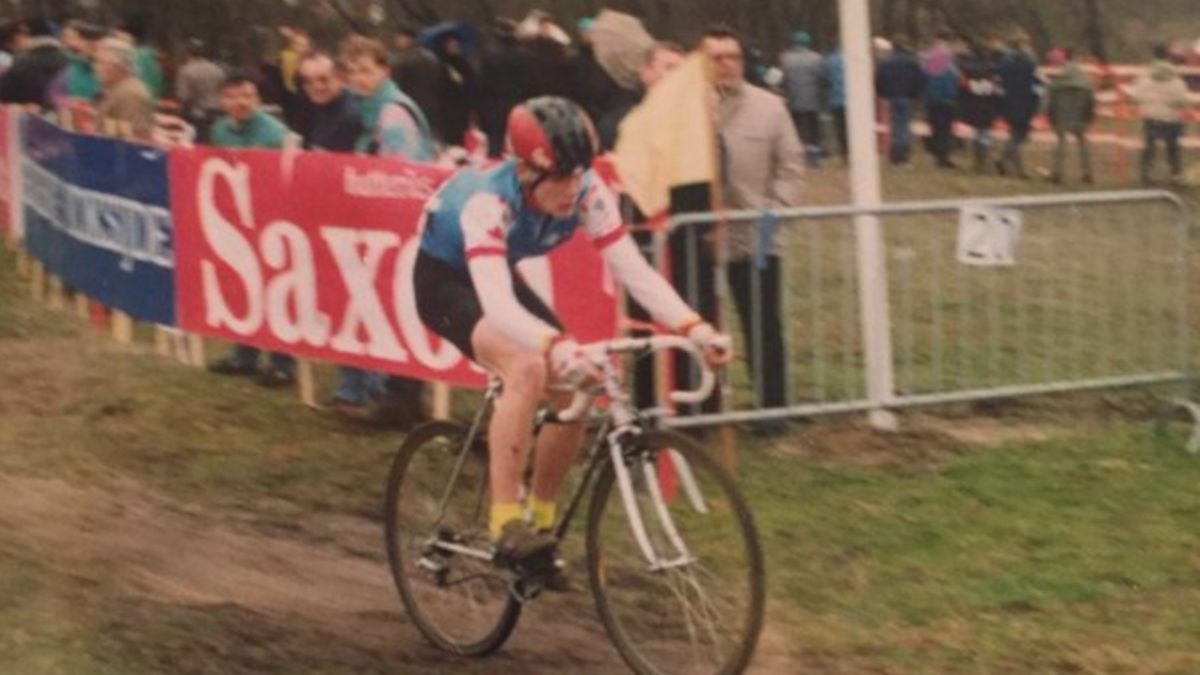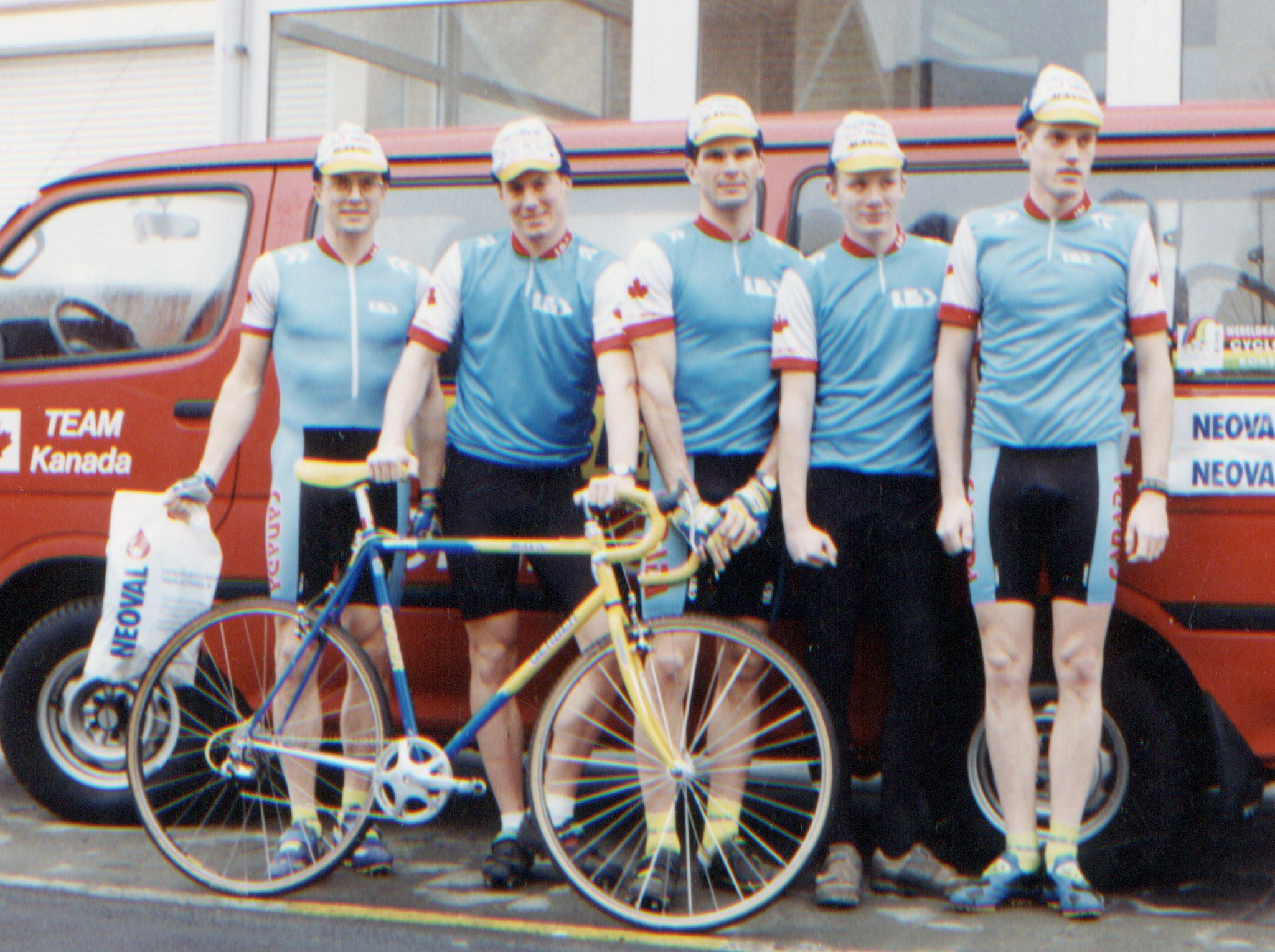What I learned from riding the sandy Koksijde World Cup in the ’90s
It was just as wild then
 Photo by:
Jorn Hansen
Photo by:
Jorn Hansen
A pro cyclocross race is quite the experience. If you’ve been watching the races on Flobikes or GCN, you can see that the courses are lined of spectators. Fans will usually pay an entrance fee to enter the gated area, and boy, can they be boisterous. Some people say that ‘cross fans rival soccer hooligans.
At the race, you’ll see large contingents of people belonging to a fan club of their favourite rider, throngs of folks wearing their country’s colours, all of them very excited to be there. Sometimes. At some of the colder races in Northern Europe fans are known to have a few Belgian beers to aid their enthusiasm.
In the ’90s, I rode a few CX World Cups and world championships. My first foray into big-level Euro ‘cross was the famous Koksijde course for the junior world championships. It was the first time that course would host the biggest race of the year. In 2023, Koksijde returns, but no longer as a UCI World Cup, but part of the X2O Trofee series. Even without the WC status, it’s still a tough and unique race. The original course was designed by Belgian Paul Herigers, who would go on to win the rainbow jersey. The route has changed somewhat throughout the years, but still features the incredibly difficult sand dune sections, which are very hard to ride, and even harder to run. One of the tougher dune sections is even named after Herijgers. Nowadays, the course goes counter-clockwise, whereas when I did it, we went clockwise. It’s a unique course in that you feel bogged down when you try to churn a heavy gear through it, and when you run up (or down) the hills, you’re stepping into a deep uneven pit.
Liquid Cross by the master @WoutvanAert #Koksijde #cyclocross @ThamesVelo pic.twitter.com/vspfKumstW
— Dylan Hubble ?? (@dylanhubble) November 25, 2018
When I was a junior, I was riding with some pioneering Canadians who’d gone across the pond to race ‘cross: Kris Westwood, Bill Hurley and Brian Pedersen, who were all riding the pro race. Westwood and Hurley followed in the path of the OG of Canadians on the international circuit, Mark Orzel, riding all winter-long on the Swiss Gerber team.

I was excited to test out my brand-new Alan ‘cross bike, considered the go-to bike at the time. My dad and I had driven down to Belgium to buy matching ‘cross bikes, and outfitting them with Shimano STI levers, which at the time, was a novel thing to use in the mud.
Unfortunately for me back then, my early version of the shifters got filled with sand. The night before the big race, I noticed they didn’t work. My dad’s bike was the spare, but a size too small so I didn’t want to use that as my main ride. The Swiss mechanic decided the only option was to mount a (friction) SunTour bar-end shifter, meaning my fancy STI levers would only function as brakes. You can see it in the photo.
When I rode the course, I could not believe how difficult the sand was. There were ridable sections if you had enough momentum, but riding down some of the sandy descents could be a trip, given that your bike would swerve madly in the ruts.
The course features some pavement sections at the start/finish, and some hard-packed grass areas, but the sand is what makes or breaks the race. After I rode the race as a junior (which I managed to finish, although pretty low in the results,) I watched the pros after. By the way, the junior race was won by Gretenius Gommers, and a certain Sven Nys came in fourth. In the pro race, Herijgers absolutely flew across the sand, taking Dutch star Richard Groenendaal with him. On the last lap, he famously patted him on the back, as if to say “good race” before dropping him and soloing to victory.
Herijgers also had a distinctive victory salute after his dominant ride. Some people said that the Belgian’s celebration was a bit much, but the legendary celebration has been replicated by other pros in homage to Herijgers.
As an under-23, I rode the pro UCI World Cup version of Koksijde as well. It’s hard to realize just how fast the Europeans are until you ride alongside them. Their dismounting and remounting, their quickness up and down the hills are impressive.
Liquid Cross by the master @WoutvanAert #Koksijde #cyclocross @ThamesVelo pic.twitter.com/vspfKumstW
— Dylan Hubble ?? (@dylanhubble) November 25, 2018
A few years later, when I raced against the pros, I remember being elated as I made it to 45 minutes, still not having been lapped by the leaders. For me, if I were to finish the race, it would have been a personal victory. I was slogging along in the sand, about to pat myself on the back, pushing my 36 x 28, when I looked to my right.
And then I saw them: van der Poel (Adrie, that is) and Thomas Frischknecht, both in their big chainrings, going twice as fast as me. And that was the end of the race for me.
The racing gets underway on Jan. 5. with racing for juniors, u-23 and elite men and women.
You can watch the X2O Trofee Cyclo-Cross – Vlaamse Duinencross Koksijde racecs on GCN+.
